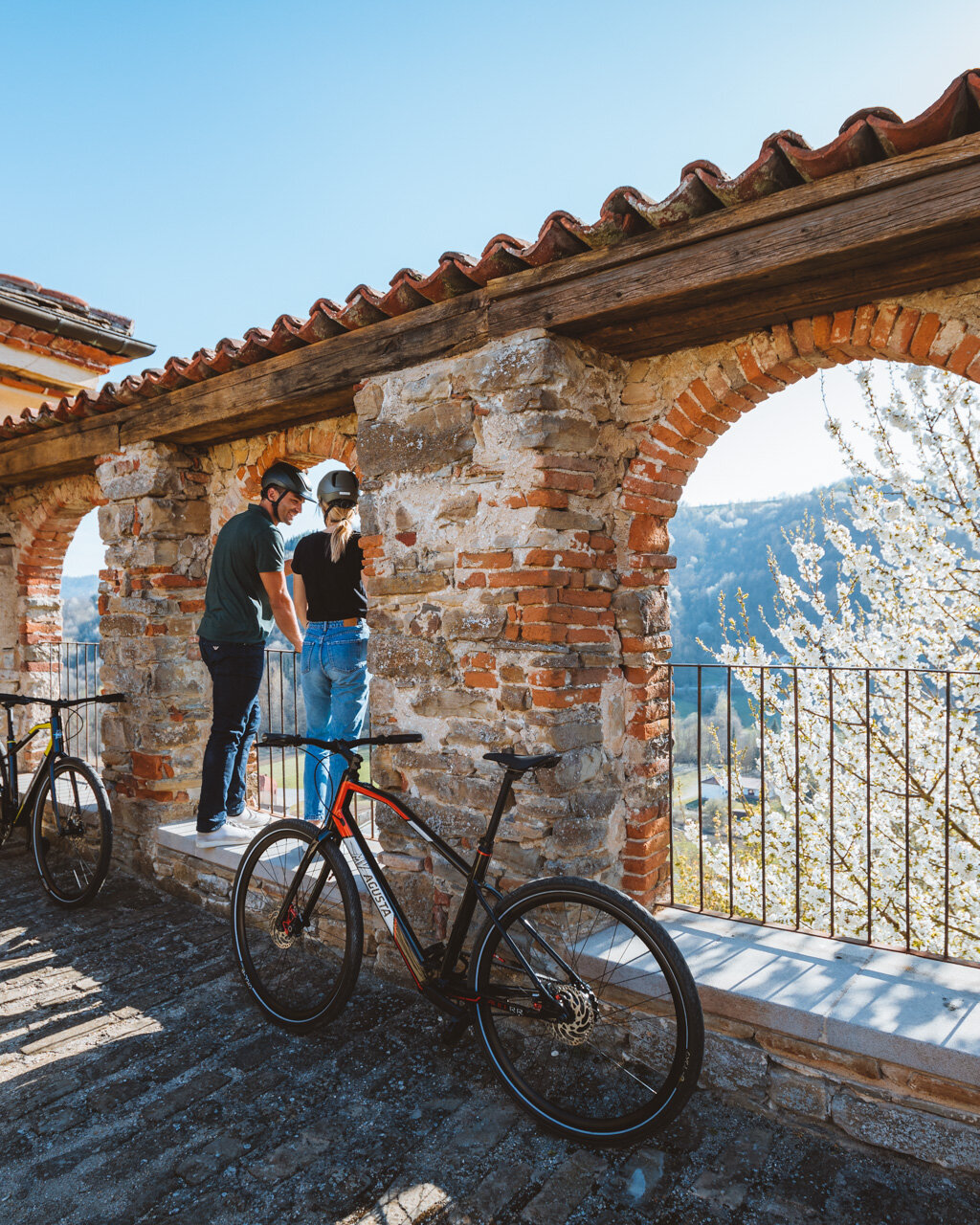This manor dates back to the early 1200s, but nothing remains of the original building, which was burned by the Spanish in the mid-16th century. It was rebuilt as an impressive aristocratic residence, complete with ramparts and a protected passageway that connects it to the village’s main church. In 1630, Christine Marie of France, Duchess of Savoy and wife of Victor Amadeus I, stayed here for a few months when she had fled Turin to escape the plague. At the end of the Isnardi dynasty, the castle was the home to a group of missionary nuns before it was purchased by its current owners, who open the residence to the public for guided tours and public or private events.
Continue along past the walls of the castle beneath the watchtower, then head down towards the centre of the village. As you descend down Via delle Chiese, you will see important monuments such as the Church of SS. Pietro and Paolo, designed in Baroque style by Francesco Gallo (who also designed the impressive elliptical cupola of the Santuario di Vicoforte), the Sant’Agostino Confraternity, and the 18th century Villa Rambaudi. When you reach Piazza De Zardo across from the Town Hall, turn left onto Via Oscar Milano, which runs along the flat to the intersection with Via della Valle. Follow this street for its entire length as it leaves the centre and heads out to the residential area at the edge of town.
Once you have passed the final homes, the road turns to dirt and continues through an ample valley of cultivated fields and tranquil woods. Cross a stream and continue along the trail to America dei Boschi, where you will again find the S1 trail (“Grande Sentiero del Roero”). This area features a vast forest of flora that enjoys these drier conditions, such as the European oak (Quercus robur), the European hornbeam (Carpinus betulus), the small-leaved lime (Tilia cordata), the European aspen (Populus tremula), the field maple (Acer campestre), the sweet chestnut (Castanea sativa), as well as the invasive “false acacia” (Robinia pseudoacacia) and, in the driest and sunniest areas, the Scots pine, downy oak, juniper, hawthorn, and viburnum.
When you reach Strada Salimau, which becomes paved at the edge of the first of the area’s homes, continue on to a church of recent construction. Turn left here onto highway SP 340, then keep to the right after a few hundred metres to follow along a gravel road that passes through woods and hazelnut groves before joining back up again with highway SP 340. Continue along this highway to Saliceto/ Cravioli and on to the village of Pocapaglia near the San Sebastiano picnic area, where there is a grassy field overlooking a vast natural amphitheater of rock formations that is considered one of the most beautiful views of the entire area.
From here, you can take a brief detour to Bra, at the head of Il Grande Sentiero del Roero (Trail S1), by following the signs for Trail S1. This town is at the crossroads of history, culture and cuisine. Its ancient origins are rooted in the Neolithic age and reach back to both the Roman Empire and the Savoy dynasty. As you stroll through its streets and squares, you will see important examples of Piedmont Baroque architecture and the hilltop villa La Zizzola, a symbol of the city.
Bra is the town where the international Slow Food movement got its start and is also known for its own culinary delicacies, including: the Bra veal sausage, which is to be enjoyed raw and Bra cheese (PDO), which is celebrated together with cheeses from around the world as part of the international event “Cheese: Le Forme del Latte”. Add some fresh local produce to Bra sausage and cheese and enclose it all between two slices of artisanal bread for a slow-food sandwich that encapsulates all the flavors of this region.
PLEASE NOTE: Responsibility for the maintenance and practicability of the various trails lies with the municipalities where the routes are located. The Tourist Board, therefore, cannot be held responsible for any inefficiencies, but is willingly available to collect your reports so that they can be forwarded to the authorities concerned.

